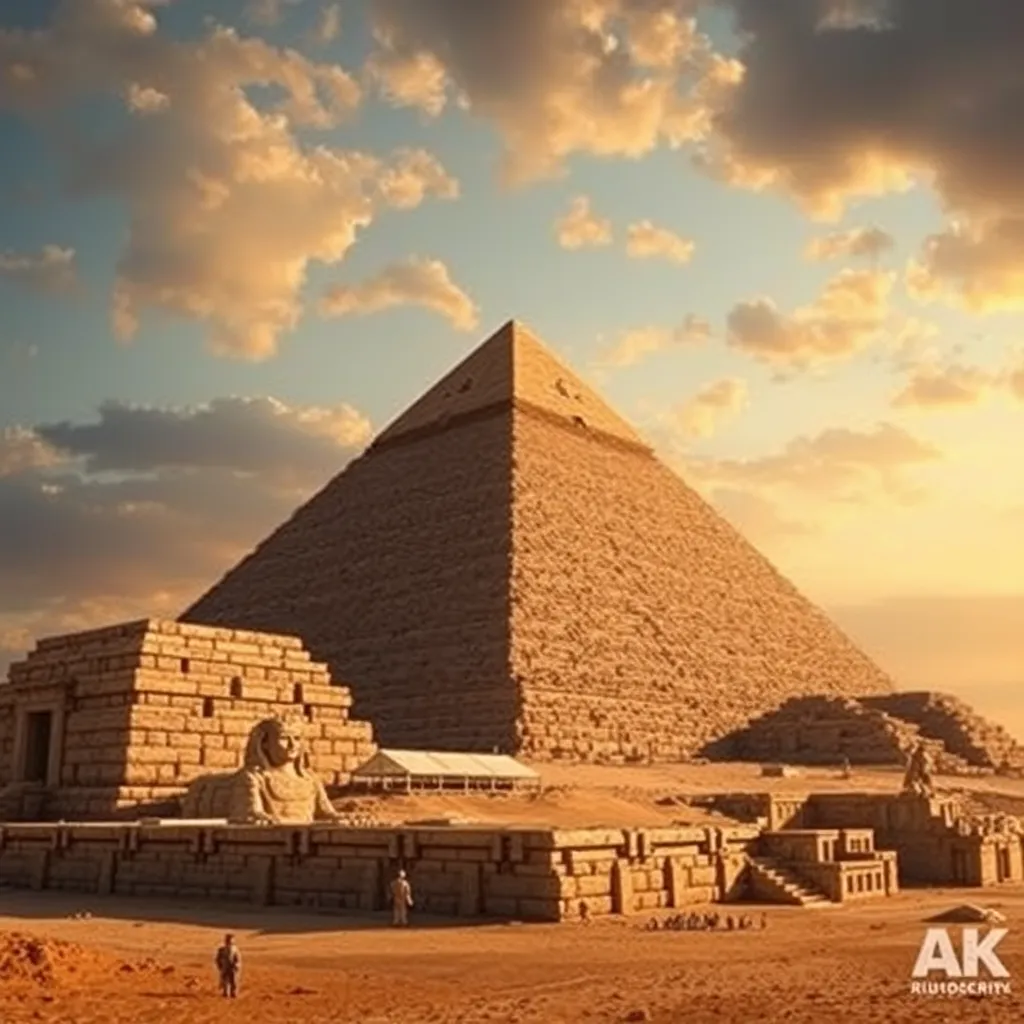The Great Pyramid’s Mysteries: What Have We Learned?
I. Introduction
The Great Pyramid of Giza, one of the most iconic structures in the world, stands as a testament to the ingenuity of ancient Egyptian civilization. Constructed around 2580–2560 BCE, it is the largest of the three pyramids on the Giza plateau and was originally built as a monumental tomb for Pharaoh Khufu, also known as Cheops.
This architectural marvel has captivated historians, archaeologists, and tourists alike for centuries. Its sheer size, precision, and alignment with celestial bodies have led to its significance not only in the context of ancient Egyptian culture but also in the broader narrative of human achievement. The purpose of this article is to explore recent discoveries and theories surrounding the Great Pyramid, shedding light on the mysteries that continue to intrigue scholars and enthusiasts.
II. Historical Context of the Great Pyramid
The construction of the Great Pyramid is believed to have taken place during the Fourth Dynasty of the Old Kingdom of Egypt, under the reign of Pharaoh Khufu. Traditional estimates suggest that it took about 20 years to complete, utilizing a workforce of thousands of skilled laborers, craftsmen, and support staff.
In ancient Egyptian culture, pyramids served as monumental tombs, reflecting the society’s beliefs in the afterlife and the divine right of kings. The Great Pyramid, specifically, was not only a burial site but also a symbol of Khufu’s power and an embodiment of the state’s religious and political ideologies.
Previous theories about the purpose of the pyramid have included interpretations of it as a mere tomb or as a complex structure for solar worship. However, ongoing research continues to challenge and expand these traditional views.
III. Architectural Marvels and Engineering Techniques
The design of the Great Pyramid is a marvel of engineering, showcasing advanced knowledge of mathematics and astronomy. The pyramid originally stood at 146.6 meters (481 feet) but now reaches about 138.8 meters (455 feet) due to the loss of the outer casing stones.
Recent studies have revealed new insights into the construction methods employed:
- Materials Used: The core of the pyramid is primarily made of locally quarried limestone, while the outer casing was originally composed of Tura limestone, known for its fine quality and smooth finish.
- Workforce Organization: Evidence suggests that the workforce was not made up of slaves, as previously thought, but rather skilled laborers who were organized into teams, possibly even rotating shifts.
These findings emphasize the sophisticated techniques and societal structures that facilitated the construction of the Great Pyramid.
IV. Astronomical Alignments and Their Implications
The alignment of the Great Pyramid with the cardinal points and celestial bodies has sparked much debate among scholars. The sides of the pyramid are closely aligned with the four cardinal directions—north, south, east, and west—which indicates a profound understanding of astronomy.
Theories regarding the pyramid’s astronomical significance suggest that it may have been designed to serve as a celestial observatory or as a means of connecting the pharaoh to the divine. This connection to the cosmos reflects the ancient Egyptians’ intricate cosmology, where the heavens played a critical role in their religious beliefs and practices.
V. Recent Archaeological Discoveries
In recent years, archaeological excavations have uncovered significant findings within and around the Great Pyramid. Utilizing advanced technology such as ground-penetrating radar and 3D scanning, researchers have been able to identify hidden chambers and previously unknown features.
Some key discoveries include:
- Hidden voids within the structure that may suggest additional chambers.
- Evidence of a complex system of tunnels and passages that could have been used for both construction and ceremonial purposes.
These discoveries have profound implications for our understanding of the pyramid’s construction and its role in ancient Egyptian society.
VI. Theories on the Pyramid’s Purpose
Traditionally, the Great Pyramid has been viewed primarily as a tomb for Pharaoh Khufu. However, alternative theories have emerged, suggesting a more complex purpose:
- Religious Functions: Some scholars argue that the pyramid was a center for religious rituals and ceremonies related to the afterlife.
- Astronomical Significance: Others propose that the pyramid served as an astronomical observatory, aligning with stars and celestial events.
- Symbolic Functions: The pyramid may also symbolize the pharaoh’s journey to the afterlife, acting as a bridge between the earthly realm and the divine.
Each of these theories is supported by varying degrees of evidence, highlighting the complexity of the pyramid’s role in ancient Egypt.
VII. Cultural Impact and Legacy
The Great Pyramid has left an indelible mark on modern architecture and engineering. Its design principles and construction techniques continue to inspire contemporary builders and architects.
Moreover, the pyramid’s iconic status has permeated popular culture. It appears in literature, film, and art, symbolizing mystery, power, and the ingenuity of ancient civilizations.
Ongoing research into the Great Pyramid not only enhances our understanding of ancient Egypt but also reshapes historical narratives, making it a focal point for continued archaeological exploration.
VIII. Conclusion
In summary, the Great Pyramid of Giza remains one of the most enigmatic structures in human history. Recent discoveries and theories have shed light on its construction, purpose, and cultural significance. Yet, many mysteries remain unsolved, prompting further inquiry into this ancient wonder.
As we continue to uncover the secrets of the Great Pyramid, we are reminded of the rich and complex tapestry of ancient Egyptian civilization. The call to action for researchers and enthusiasts alike is clear: the journey of exploration and understanding in the field of Egyptology is far from over.




